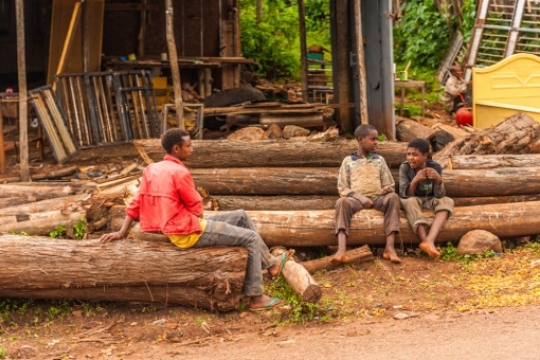When it comes to enforcing harvesting limits in forests in Ethiopia, it is more effective when communities monitor themselves, rather than when the state serves this function. But the cost of this monitoring needs to be kept low, if it is to be most successful.
Since the 1990's, as a way of slowing illegal timber felling and the spread of farmland into state forests, the government there has started allowing communities in the south-west of the country to use state forests to harvest timber and certain wild products like honey and coffee.
Researchers from the Environmental Policy Research Unit (EPRU) at the University of Cape Town have studied the income and development potential of this scheme extensively over the past few years.
Now, EPRU research fellow Dambala Kutela is interested in how the use of these forests is governed, enforced and monitored.
‘With this change in property rights, the trees themselves are now the property of the communities,’ explains Kutela.
Rules have been put in place to manage how much timber is harvested yearly from within these forests. Different models have been used to monitor and enforce these property rights. It is also a way of protecting the forest from use by non-rights holders, poaching of timber and damage by vandals.
‘One model for governing forest use, is for the state as an external agency to come in and monitor harvesting.’
This involves sending state officials into the forest to count and monitor how many trees have been felled, for instance, and where. Another way is for the community to craft its own rules around forest management, and then to do the inspections and enforcement themselves, as a form of peer monitoring.
‘The new research question for me has been to test which of these - or variations of these - is most effective,’ Kutela says.
Kutela set up a series of experiments with these forest-using communities in his home country to see which variations of these models worked best.
‘I found that when the self-monitoring is done by the community themselves, it is definitely more effective,’ he explains, ‘but this works best when the cost of monitoring is kept low. If communities incur a high cost, in terms of time to patrol and inspect the forests, it doesn’t work as well.’
The message for policy makers is to allow these forest communities to craft their own rules for forest management, and handle the enforcement themselves. However the state must subsidise the practicalities of the role, in order to keep the cost of monitoring down.
